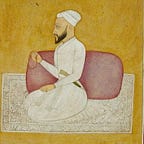I’ve been asked to compare the genetics of ancient Pakistanis to that of modern population, so using data collated from Genoplot, I’ll be doing just that. The samples are all from Swat, a traditionally Dardic region that was Pashtunized during the medieval period. The ancient DNA has been dated to roughly the Late Vedic Period (1100–500 BC), a few centuries after the Aryans arrived in the region.
The first Uniform Manifold Approximation and Projection (UMAP) of the data will compare Late Vedic Swat samples to modern Yusufzai (the largest Pakhtun tribe in Swat), Gujjars (the largest Indic tribe in Swat), and Kohistanis (Dards from the adjacent Kohistan valley). Also included are a few Indus Valley Civilization samples (IVC).
The first thing to note is that Yusufzai Pakhtuns are considerably different from Ancient Late Vedic Swatis. This makes sense give what we know of the Pashtun migration into the region, which involved a degree of both assimilation and expulsion of the native Dards. That being said, while the Indic Gujjars and Dards are closer to the Ancient Swatis, they too are largely distinct from the latter. Its also interesting that even centuries after the Aryan incursion, a few Late Vedic Swatis look more or less like individuals from the even more ancient Indus Valley Civilization, and appear to have largely avoided any Aryan admixture, which is ubiquitous in the region today.
The next UMAP will focus on two groups I found that cluster reasonably close to the Late Vedic Swatis, specifically the Punjabi Arain and Khatri tribes.
As seen above, these two Punjabi tribes do show more overlap with Ancient Swatis, but are still generally distinct. While samples from Southern Punjab may prove closer fits, it seems likely that there are no modern populations that cluster exactly with the ancient Swatis. The reasons for this could be many, but I believe two major population movements into the region are the principal culprits; the first being the influx of Gangetic Indians, and the second being the influx of Pashtuns. These population movements were instrumental in churning the genetic makeup of the Indus Valley into the picture we see today.
Notes:
Genetic samples for the analysis in Harappa format, can be accessed at Anthrogenica and Genoplot. BioVinci used for analysis.
